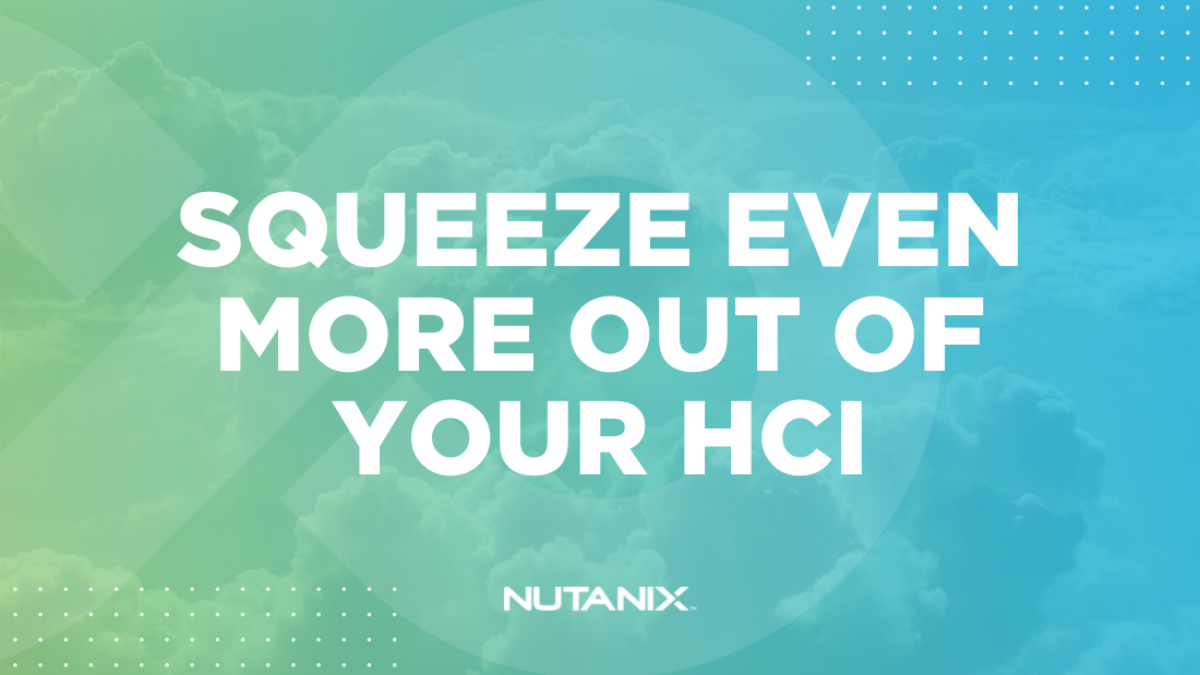Unwavering customer focus is one of our core tenets here at Nutanix and we’ve heard the call loud and clear from customers seeking even better resource utilization from your infrastructure. Memory overcommit support is now available for AHV to help drive hardware utilization efficiencies within your environment. It provides an effective way to reduce hardware costs and increase the capacity of an existing environment that can’t be immediately expanded with new hardware. If you want to increase the density of your test, dev, disaster recovery, and other less performance-sensitive environments, this capability will allow you to reclaim memory from over-provisioned virtual machines (VMs).
The ability to overcommit computing resources is a central benefit of virtualization. For example, most workloads don’t use 100% of their assigned CPUs most of the time, and the hypervisor can dynamically allocate CPU cycles to workloads that need them at each point in time. This core benefit is what drove virtualization into datacenters, enabling IT to get more done with the same amount of physical hardware. Memory overcommit takes this to another level, making it possible to optimize memory hardware utilization as well.
Feature Details
Memory overcommit enables more memory to be assigned to VMs than is physically present in the server hardware. The hypervisor can then reclaim currently unused memory allocated to a VM to make available to other VMs on the host. Based on the memory usage of the VM, AHV adjusts to match the appropriate memory usage for each VM enabled with memory overcommit. The excess memory can be used by the host to satisfy the memory requirements of another VM. This provides a great way to reduce hardware costs for large deployments or to increase the utilization of an existing environment that can’t be immediately expanded with new nodes. Memory will only be shared by VMs that have memory overcommit enabled by the administrator or user. Other VMs will operate with their pre-assigned memory, and can coexist with overcommit enabled VMs.
Memory overcommit enables the host to utilize excess memory inside a VM for any existing or new VM within the host. For example, excess unutilized memory of VM1 on Host1 can be utilized for another VM on Host1. Hence this feature is adaptive. The system will identify an appropriate size for a VM by observing metrics related to memory pressure. AHV will measure these metrics and provide them to ADS (Acropolis Dynamic Scheduler). ADS will consolidate those metrics and decide on an overall “memory pool” size for each host that all overcommitted VMs on that host share; and within the boundaries of this pool, AHV will then adapt VM sizes to minimize swapping and optimize performance.
Nutanix uses a multi-tier approach, which involves a combination of ballooning and hypervisor-level swap. The rationale is that ballooning can offer insight into a VM’s memory management status that is hard to get from outside. Hypervisor swap offers a guarantee that we can shrink VMs even if they don’t have a balloon driver, their balloon driver isn’t working properly, or the VM is maliciously tampering with the balloon driver. Overcommit by Ballooning is enabled by default and is preferred but we fall back on hypervisor swap for VMs that do not have a functional balloon driver or where the balloon driver is not able to remove the desired amount of guest memory in a timely fashion. Hypervisor swap is implemented using per-host vdisks hosted on AOS.
Metrics are presented to the administrator in Prism Central to indicate the gains achieved through overcommit and the impact on the performance of running VMs. As memory can be consumed quickly, compared to hours or days for storage, and isn’t as dynamic as CPU or network utilization, this feature may not be appropriate for performance-sensitive workloads.
Overall, memory overcommit can be a useful tool for you to achieve the business objective of hardware cost-effectiveness and increased density.
Wrapping Up
That sums up our 101 on Memory Overcommit feature. For more information check out the guide on Nutanix Portal, and take a look at a deployment example. Thank you.

